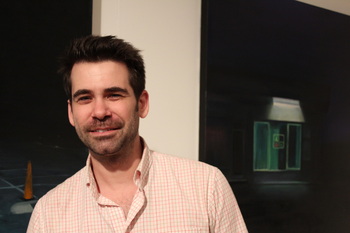
Young’s paintings capture locations we take for granted in the modern world. He paints “non-places,” locales that are ubiquitous, that have become a part of the worldwide collective subconscious. This sounds rarified and quite high falutin’ before you know Young’s subject include gas stations, airports and parking lots .He paints them, mostly, as nightscapes.
Why the night and why paint these manmade, artificially lighted bits of modernity at all?
“I think I am genuinely attracted to florescent light. I paint in a studio that the majority of light comes from fluorescent. And I think sometimes when you are driving down the road and you see a gas station and it is illuminated to the extreme,” says Young. “There is this hard edge and the light is trapped under this cover, this shelter where the gas pumps are and the colors and saturation. It is asking to be painted.”
And it is this light, the light that illuminates our nights, rather than the moonlight or starlight that is usually the light in Young’s paintings. The paintings offer a different perspective on nightscapes. They change with the subject and are not simply a juxtaposition of light and dark.
“Some people admire the sunset because of color saturation. I love the color saturation and the primary colors of manmade places. And the intensity of them and the mixture; there will be a fluorescent light on this wall and a mercury light on this wall and they are mixing together creating this experience that doesn’t happen in nature,” he says. “These are manmade experiences and we take them for granted. I will roll up on a kiosk and it will have a coca cola machine and a bank machine. It is just sitting there it is a sanctuary we go to that place, not even hesitating; ‘oh I gotta get some shit lets go in there’.”
The design of these places appeals to us on some level. We trust them. The design matters but the illumination is more important.
“Illumination is a powerful element we take for granted. It is very new, I think the way fast food and airports illuminate stuff we take as a given. But it is one of the most modern experiences to have,” says Young. “People die in the dark. You can’t read. You can’t drive. All These things are possible with light pollution that is really beautiful.”
Young notes that there is no mechanism, no hesitation that tells us to not go in. It is almost universally welcoming. To Young, this is not just because it is something we see on the corner. It is the intention of the designers and those designs reach out to him.
“There is something about those design elements that are really sexy to me. We do not question taking $300 out of a bank machine in the middle of nowhere. We don’t question the safety of it. Yes, it is an action of getting money but it is the design that disarms us. It is the illumination,” says Young. “It’s the fact you can get Bugles and Cheetos and Combos and then get $500 dollars—just for the example of the kiosk w bank machine. So they want us to disarm ourselves. Those elements that disarm us are really powerful and they are primary.”
It isn’t just the light, the artificial light, which Young looks to in his work.The darkness matters too. But he doesn’t try to recreate “truth” or “nature in the work. He tries to capture the conflict between light and dark.
“It’s funny I love Whistler and he says nature is very right to such an extent that nature is usually wrong. I took that and said ‘natures wrong,” But in saying that is nature is wrong it is just because nature kills and just devours us. We just can’t survive very long in nature. We have to organize and formulate a survival mechanism. And light is one of the key essential elements of doing it,” says Young. “Light is pushing into this darkness it pushes into the darkness it is fleeting constantly… It takes a lot of power to light. It takes a lot of energy to make the dark go away. I am very specific about how I like the dark to take over the light. When I am making a painting I am aware of the fact the dark is the monster and the light is the little baby that is going to be crushed.”
“I look at what McDonalds has; its red and gold. It is the color of the sun. The sun is the most powerful icon in the world and then the red represents earth and blood. It is the most basic most rudimentary color system in the world,” says Young. “It is the first two colors is actually gold and oxide. Those things are still very attractive to us. We try to discount them but they’re beautiful.”
Young says we dress in black and try to be bourgeoisie. In other words we want to be outside the norm, outside what appeals to the masses. Yet it is difficult to argue that the elements of these transient non-places are powerful with their pictograms, numbers and color saturation.
“It brings us in. and I think there is a cultural problem in the works. And this is what I am fervent about because people want to attack McDonalds. Ok, fine but just look at it for a second, it is a beautiful place.” says Young.
In fact, Young goes so far as to say some of these manmade things are the most beautiful things of all time. He was working on a 100 inch McDonalds painting for a museum show at the time of this interview.
Airports and airplanes also have a special place in Young’s work (and these are not always depicted at night--in fact Young does have daytime and dusk/dawn paintings).
“Airports are an amazing place. You are getting into a dangerous machine whether it is gonna crash or a terrorist yet we are totally disarmed. We don’t even talk to anyone.” says Young.”…I mean an airplane is one of the most beautiful things ever built and the fact that it flies on top of that is like ‘wow’. And I am naturally drawn to paint airplanes. I don’t know why more artists don’t want to paint airplanes they are these gorgeous, illuminated feminine and masculine moments…I struggle painting airplanes because of the complexity. I am drawn to paint them. They are gorgeous.”
And it isn’t just McDonalds, gas stations and airports that inspire Young. What is the apex of organization and use of space in the modern world? It is the parking lot. You don’t question the safety of your vehicle. You just pay the guy in the booth and leave the car there. Why?
“It has to feel secure. We take for granted our sec. We wouldn’t leave our car in some places but we put it in a parking lot. We would take money out of a certain bank machine because it is over illuminated. You don’t take money out of the dark bank machine.” says Young.
Young says there have likely been a lot of painters who used parking lots as their subjects He has always been attracted to the little kiosk with a guy in it. In Young’s painting, The Man In The Box, the man is gone. He isn’t relevant to the experience.
“We pump gas we don’t interact. We go to McDonalds and hardly interact. We function on a level w all these luxuries and we do not have to authenticate it with another person,” says Young. “So when I think of these experiences, of going and experiencing the world, I think of us alone. I think it is really beautiful I like being alone. I think it is really great we don’t have to interact with people we can just do it.”
“I enjoy the works of certain artists-especially American photographers—that capture this kind of ambient feeling. You can just feel that there is something else happening in these places. They are not formalized, constructed shapes. You can feel the character of the place. I love that.”
American photography between 1953 and 1982 is a large influence in Young’s work.
Yet despite how all the places Young paints are manmade there are no people in the paintings. There is loneliness to them beyond this to be sure. But there are no humans in Young’s non-places.
“It’s funny I am a very social person I like to chat and talk and everything…but I really like to be left alone. ..We can function for months and not really truly authentically interact with anybody,” he says. “Non places allow that to happen. When we go into an airport often we are wearing our headphones. We kind of have a cinematic feeling, the window showing planes taking off, it is really intense…you own the space.”
The people in these paintings are the audience. We are the people interacting with the spaces in Young’s work.
“When I make these paintings I think of them as us in the space; as us approaching this. We are entering into this. I don’t think my paintings are ever dangerous looking,” he says. “I feel like they are always like this is a beautiful moment and you are witnessing it. This is a moment you might have taken for granted. It’s inviting you.”
How does Young get the varied blacks he uses in his nights? They change from painting to painting. In some the light seems to be winning and in others the darkness.
“When I am making a painting I use a very specific black, it is my own recipe of this one black. I like to use. I often glaze in and glaze in and glaze in but I glaze in like a painter. I don’t just glaze it in I paint it in. then I will mix another color in there. And essential it becomes more and more transparent and pushes up more to the light.” he says.
And the work doesn’t always stay the same after young begins. His painting, Work Heat Cool, started out more illuminated and then became darker.
“I wanted it to become a very isolating moment.” he says.
The painting, Prostrating Steel, also changed in a similar way. But Young is conscious that adding is not always the way to make a painting work.
“You can make a painting and keep adding stuff. But I am very aware things are lost with details. Sometimes just a few touches reward us in that the vacantness of the space is actually really powerful.” he says.
To him, Work Heat Cool is a painting with a lot of details.
“I was aware of how much the dark kept coming in and in and in and so I just kept pushing it smaller and smaller and smaller. The painting got more intense for me and because it got more intense it got harder to look at for me,” he says. “Because the painting affects you and affects me even in the way that I am really making the moment smaller and smaller. It’s hard to verbalize because it is a sensation as much as it is a rational experience.”
His childhood memories inform his work as well. He has always been attracted to small buildings in the middle of parking lots—those buildings that invite us to get a slushie, park our car or pick up photos.
My mother worked at a photo mat when she was much younger and she always had the hookup there for years later—I wasn’t born when she worked there—but I remember her pulling up to the photo mat when I was a kid. And this little yellow photo mate—it was blue and yellow—and I can remember being so stimulated by it.” says Young.
By Patrick Ogle
For more on Young head to his website, trevoryoung.net or to dkgallery.com.
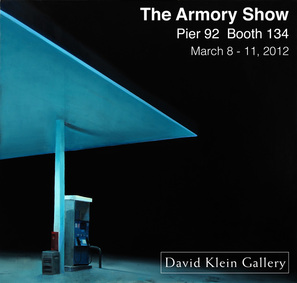
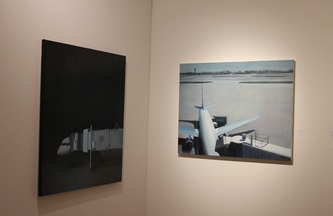
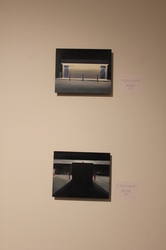
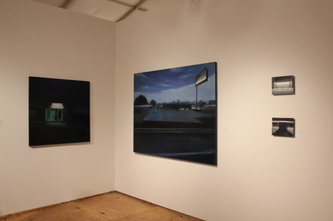
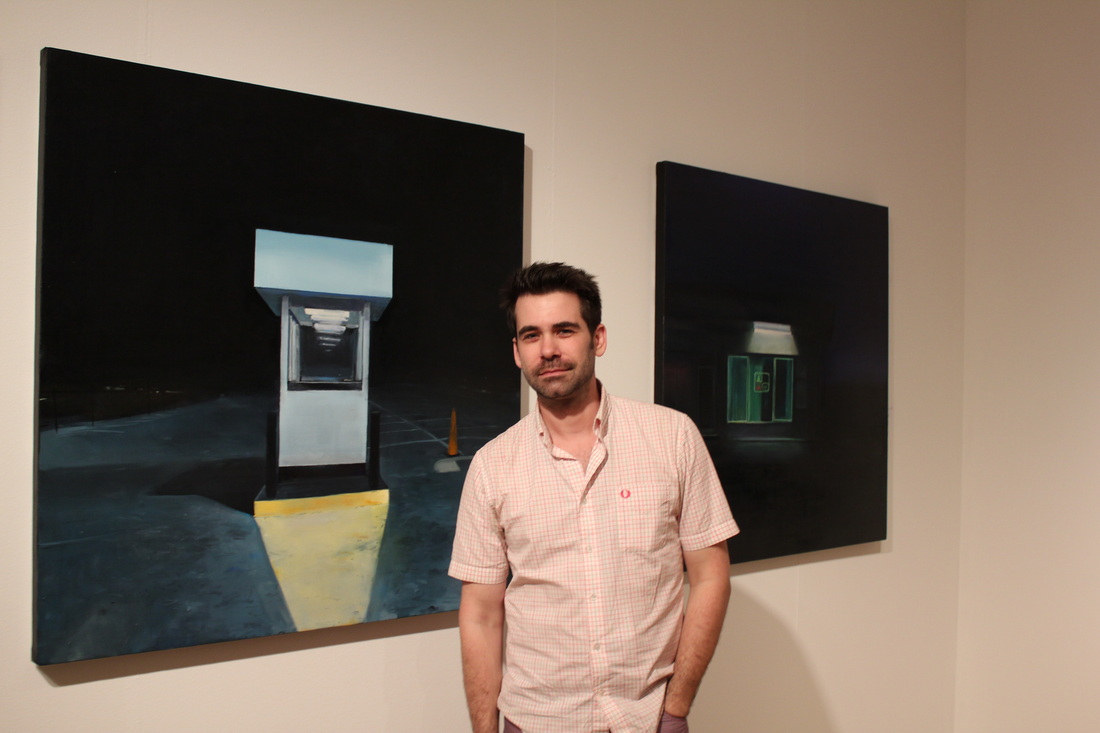
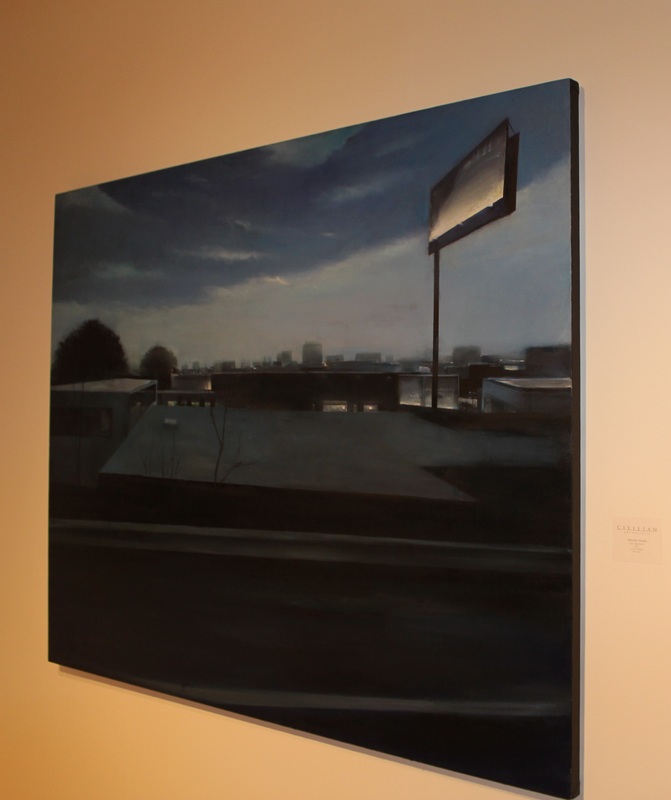
 RSS Feed
RSS Feed